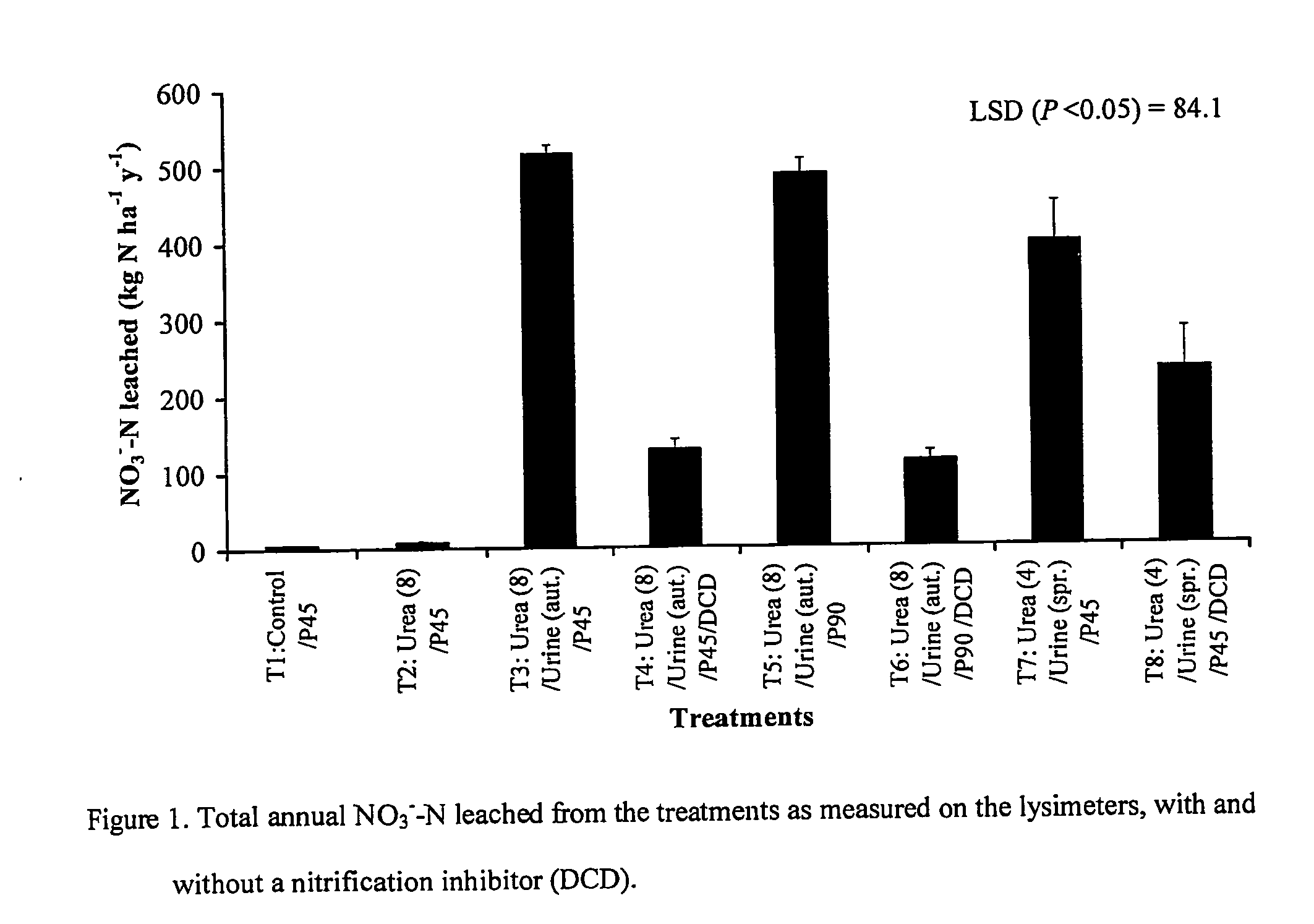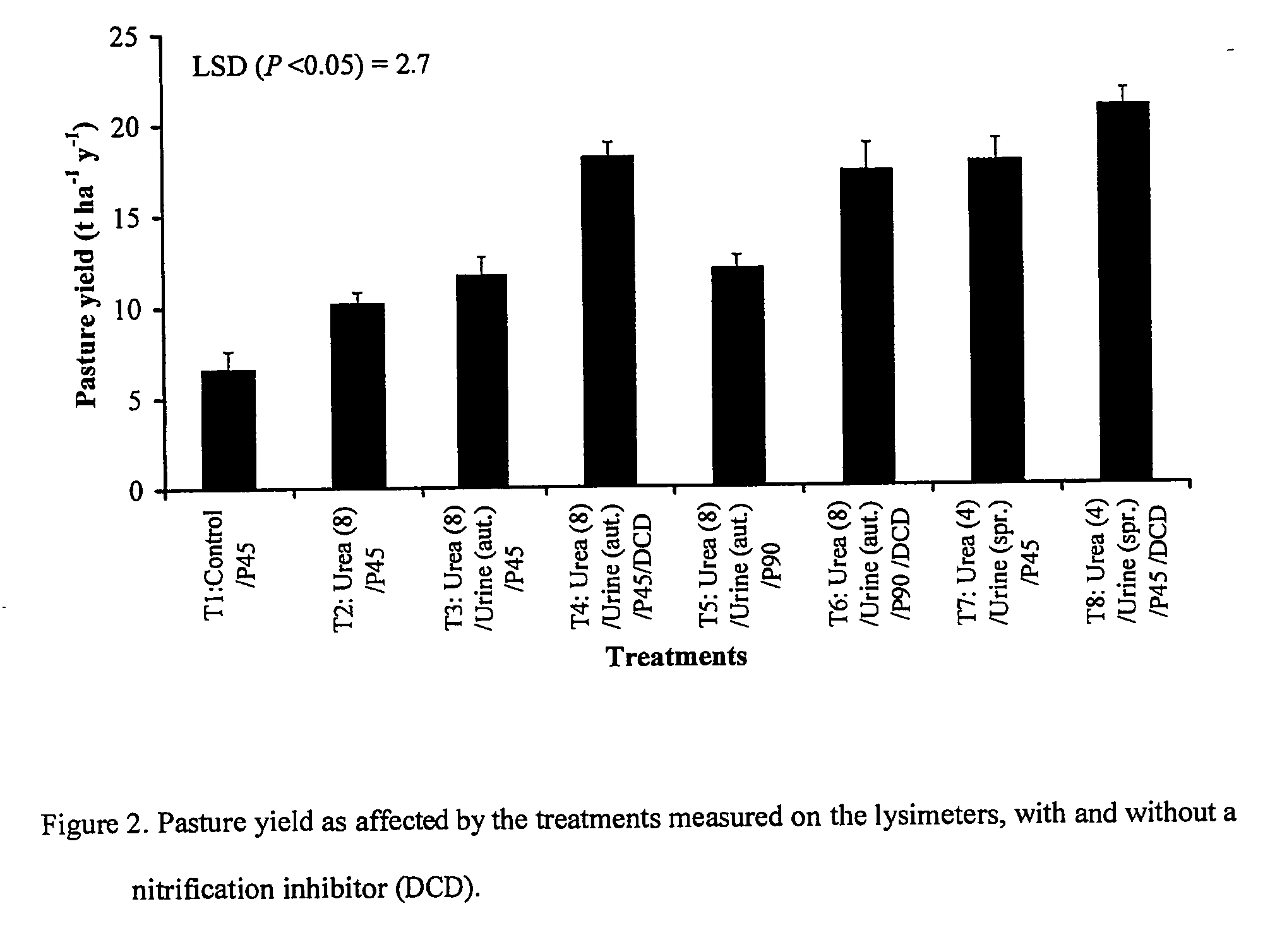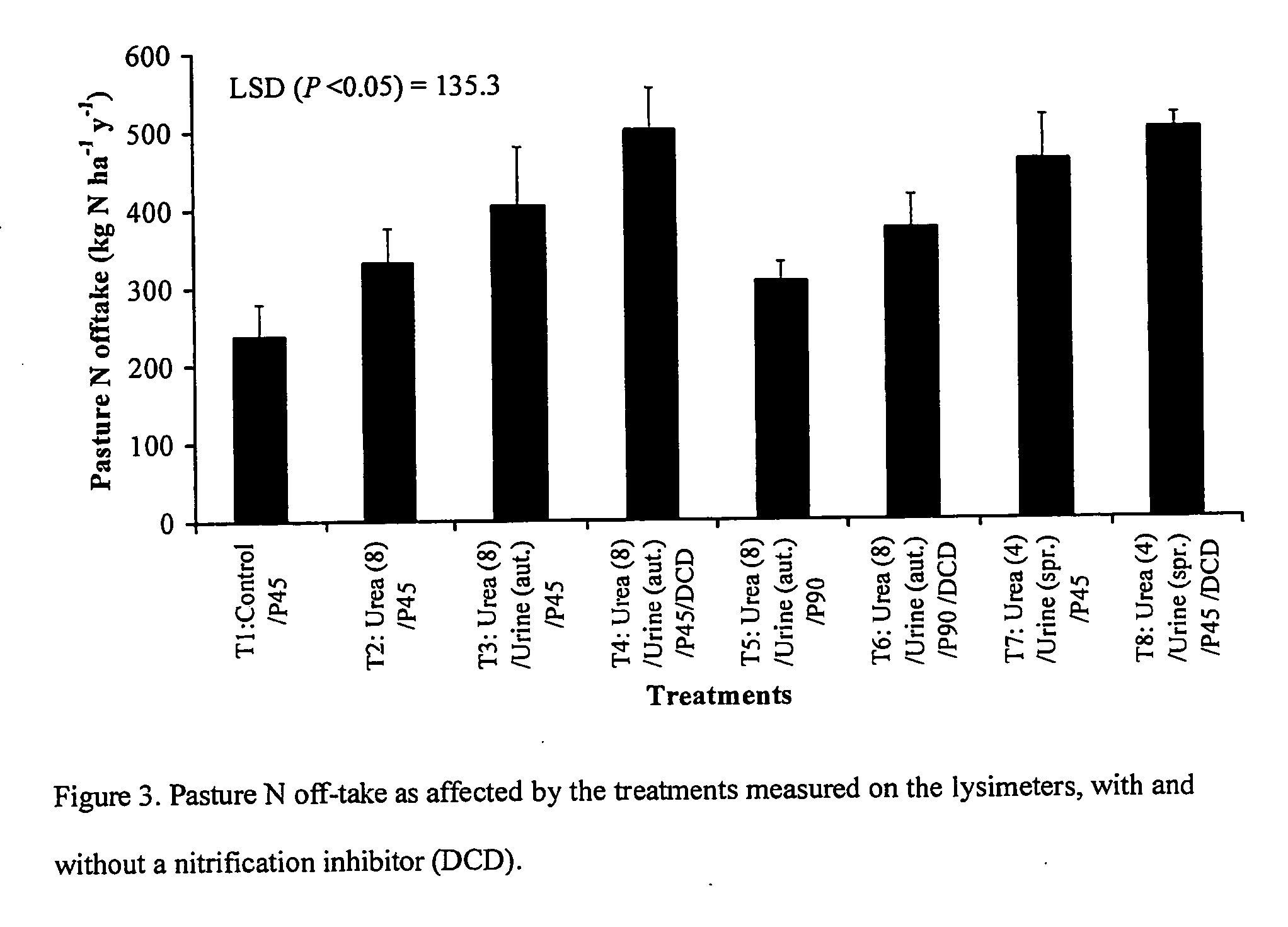Nitrification inhibitor treatment of grazed pasture soils
a technology of nitrification inhibitors and grazed pastures, applied in the field of soil management tools, can solve the problems of low efficiency of utilisation, loss of valuable nutrients of farmers, and particularly serious problems, and achieve the effect of reducing nutrient losses, increasing pasture production, and effective performance of dcd
- Summary
- Abstract
- Description
- Claims
- Application Information
AI Technical Summary
Benefits of technology
Problems solved by technology
Method used
Image
Examples
example 1
[0053] Lysimeter studies, which are state-of-the-art technology for these investigations, have shown the effectiveness of a nitrification inhibitor, dicyandiamide (DCD), in reducing NO3−—N leaching from a grazed dairy pasture under irrigation. This example used a free-draining Lismore stony silt loam (Udic Haplustept loamy skeletal) and the pasture was a mixture of perennial ryegrass (Lolium perenne) and white clover (Tifolium repens) but the process is applicable to all temperate soils and animal grazing systems.
[0054] Undisturbed soil monolith lysimeters, 50 cm diameter and 70 cm deep, were collected following well-established protocols and procedures that ensure there is minimal disturbance to the soil structure inside. The lysimeters were transported to a lysimeter facility near Lincoln University, using a specially designed trailer with air-bag suspension to minimize disturbance. The gap between the soil core and the metal casing was sealed using petroleum jelly to stop edge-f...
example 2
Delivery Systems for Applying a Nitrification Inhibitor through an Irrigation System
[0069] The intent is to spread the nitrification inhibitor evenly over the whole surface of the pasture soil by applying it through an irrigation system (such as centre pivot or travelling irrigator) where there is an ability to control and vary the application volume and rate of application according to the conditions in the soil (an example applicator is illustrated in FIGS. 5 and 6).
[0070] Delivery of the inhibitor in solution and mixed with the irrigation water ensures that the inhibitor penetrates throughout the soil surface. The ability to control the penetration of the inhibitor through the soil volume is a key determinant of the effectiveness of the compound. The effectiveness of the inhibitor is increased by distribution throughout, and thus treats, a larger volume of soil (FIG. 7) than it would if the inhibitor alone was sprayed onto the pasture soil surface. This is an advantage of such...
example 3
Delivery of a Nitrification Inhibitor Using Agricultural Chemical Spray Equipment
[0073] The nitrification inhibitor can be delivered evenly over the soil surface using agricultural chemical spray equipment (e.g., equipment currently used to apply agricultural chemicals such as herbicides or pesticides).
[0074] The nitrification inhibitor is delivered / dissolved in water and the solution and / or fine particle suspension is sprayed onto the whole surface of the grazed pasture soil from a tank of an agricultural spray vehicle.
[0075] The spray equipment can be used to apply the nitrification inhibitor immediately after grazing when the animal urine patches are ‘fresh’, this can be particularly effective during autumn grazing rotations.
[0076] Following the spray application by this method irrigation water can be applied to ‘wash’ the nitrification inhibitor into the topsoil. This will ensure that the nitrification inhibitor is distributed evenly throughout, and thus treats, the topsoil...
PUM
| Property | Measurement | Unit |
|---|---|---|
| diameter | aaaaa | aaaaa |
| diameter | aaaaa | aaaaa |
| pressure | aaaaa | aaaaa |
Abstract
Description
Claims
Application Information
 Login to View More
Login to View More - R&D
- Intellectual Property
- Life Sciences
- Materials
- Tech Scout
- Unparalleled Data Quality
- Higher Quality Content
- 60% Fewer Hallucinations
Browse by: Latest US Patents, China's latest patents, Technical Efficacy Thesaurus, Application Domain, Technology Topic, Popular Technical Reports.
© 2025 PatSnap. All rights reserved.Legal|Privacy policy|Modern Slavery Act Transparency Statement|Sitemap|About US| Contact US: help@patsnap.com



